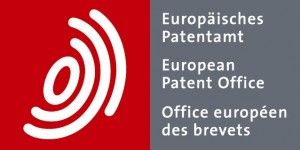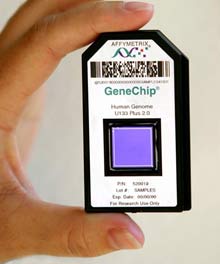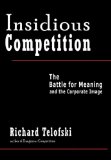Huw G. Hallybone, a Partner at Carpmaels & Ransford, gave a talk at the BIO IP Counsels Committee Conference (IPCC) in Boston last week about allowable subject matter at the EPO.
Exceptions to patentability
European patents shall not be granted in respect of:
(a) inventions the commercial exploitation of which would be contrary to “ordre public” or morality; such exploitation shall not be deemed to be so contrary merely because it is prohibited by law or regulation in some or all of the Contracting States;
(b) plant or animal varieties or essentially biological processes for the production of plants or animals; this provision shall not apply to microbiological processes or the products thereof;
(c) methods for treatment of the human or animal body by surgery or therapy and diagnostic methods practised on the human or animal body; this provision shall not apply to products, in particular substances or compositions, for use in any of these methods.
Rule 27
Patentable biotechnological inventions
Biotechnological inventions shall also be patentable if they concern:
(a) biological material which is isolated from its natural environment or produced by means of a technical process even if it previously occurred in nature;
(b) plants or animals if the technical feasibility of the invention is not confined to a particular plant or animal variety;
(c) a microbiological or other technical process, or a product obtained by means of such a process other than a plant or animal variety.
Rule 28
Exceptions to patentability
Under Article 53(a), European patents shall not be granted in respect of biotechnological inventions which, in particular, concern the following:
(a) processes for cloning human beings [drats!, I guess there won’t be two of me];
(b) processes for modifying the germ line genetic identity of human beings;
(c) uses of human embryos for industrial or commercial purposes;
(d) processes for modifying the genetic identity of animals which are likely to cause them suffering without any substantial medical benefit to man or animal, and also animals resulting from such processes.
Rule 29
The human body and its elements
(1) The human body, at the various stages of its formation and development, and the simple discovery of one of its elements, including the sequence or partial sequence of a gene, cannot constitute patentable inventions.
(2) An element isolated from the human body or otherwise produced by means of a technical process, including the sequence or partial sequence of a gene, may constitute a patentable invention, even if the structure of that element is identical to that of a natural element.
(3) The industrial application of a sequence or a partial sequence of a gene must be disclosed in the patent application.
Monsanto v. Cefetra (C-428/08)
Takeaways:
- Not possible to rely on DNA claims to protect materials incorporating the DNA where the DNA is not able to perform the specific function for which it was patented
- Appears to abolish absolute protection for DNA as such
- Claim 1: Isolated DNA
- Claim 6: A DNA sequence encoding a Class II EPSPS enzyme selected from the group consisting of SEQ ID NO:3 and SEQ ID NO:5
- Claim 7: Recombinant, dsDNA
- Claim 14: Method of producing genetically transformed plants
- Claims 21/24: Glyphosate tolerant plant cell/plant
- Claim 28: Method for selectively controlling weeds
ECJ’s ruling
Article 9 of Directive 98/44/EC of the European Parliament and of the Council of 6 July 1998 on the legal protection of biotechnological inventions is to be interpreted as not conferring patent right protection in circumstances such as those of the case in the main proceedings, in which the patented product is contained in the soy meal, where it does not perform the function for which it is patented, but did perform that function previously in the soy plant, of which the meal is a processed product, or would possibly again be able to perform that function after it had been extracted from the soy meal and inserted into the cell of a living organism.
Referral:
Does the protection of a patent on biological material as provided by the Directive, in particular under Article 9, preclude the national patent legislation from conferring (in parallel) absolute protection on the product (the DNA) as such, regardless of whether the DNA performs its function, and must the protection provided under Article 9 therefore be deemed to be exhaustive?
ECJ’s ruling
Article 9 of the Directive effects an exhaustive harmonisation of the protection it confers, with the result that it precludes the national patent legislation from offering absolute protection to the patented product as such, regardless of whether it performs its function in the material containing it.
Claim 1. A cell culture comprising primate embryonic stem cells which (i) are capable of proliferation in vitro [sic] culture for over one year, (ii) maintain a karyotype in which all chromosomes normally characteristic of the primate species are present and are not noticeably altered through culture for over one year, (iii) maintain the potential to differentiate to derivatives of endoderm, mesoderm, and ectoderm tissues throughout the culture, and (iv) are prevented from differentiating when cultured on a fibroblast feeder layer.
Rule 28(c) EPC … forbids the patenting of claims directed to products which – as described in the application – at the filing date could be prepared exclusively by a method which necessarily involved the destruction of the human embryos from which the said products are derived, even if the said method is not part of the claims.
Takeaways:
- Not relevant that methods not involving destruction of embryos might emerge later;
- Not relevant that the claims did not recite a step requiring destruction of an embryo;
- Specification made it clear that the method involved such a step; and
- Relates to embryonic stems not stem cells in general.





